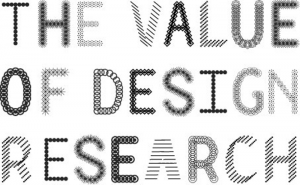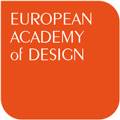14th International Conference of the European Academy of Design
Lancaster University
12-15 October, 2021
European Academy of Design Conferences
EAD 14 (UK, 2021) – SAFE HARBOURS
EAD 13 (UK, 2019) – RUNNING WITH SCISSORS
13th International Conference of the European Academy of Design
University of Dundee
10-12 April, 2019
EAD 12 (Italy, 2017) –DESIGN FOR NEXT

Sapienza University of Rome hosted the 12th International Conference of the European Academy of Design from April 12-14, 2017.
Design for Next

Contemporary shifts in society, technology, production are reframing design processes, approaches and tools. While professionals, educators and researchers are questioning the next stage of innovation, design is evolving as a wide open field with many applications and meanings. More than ever it is important to investigate through design research and practice in order to tackle the societal, technological and industrial shifts of the future.
The 12th EAD Conference is hosted by Sapienza University of Rome in Italy, and it will foster discussion among designers, academics and experts about the articulated scenario of contemporary design and its perspectives, with intent to nurture diversity and interdisciplinarity.
‘Design for Next …’ is the title and topic of the Conference: ‘Next’ implies the concept of proximity as well as of destination, related to time and to physical space. The conference seeks to discover future fields of investigation in design, as well to discover and to connect the space and the people who share common interests in design research.
We invite contributions from professionals, academics and students to address the following questions with their own research, projects and experiences: What is Design for the Next? And what is the ‘Next’ focus of Design?
The Conference is organized into 9 parallel tracks in order to address 9 wide fields of Design for Next……
Aesthetics, Economy, Education, Environment, Health, Industry, Society and Thinking
Each track will center around a keyword to engage and tackle the different fields of Design research and practice. Together, in this process, we will draw the big picture of Next Design…
“If others can see it as I have seen it, then it may be called a vision rather than a dream.”
W. Morris, News from Nowhere (1890)
EAD 11 (France, 2015) THE VALUE OF DESIGN RESEARCH

Paris Descartes University hosted the 11th International Conference of the European Academy of Design Institute of Psychology from April 22-24, 2015.
The Value of Design Research

Design today is increasingly being recognized as creating value – whether for cultural and collective intelligence, for embedding new technology into new behaviours, for fostering or acting as a force for change in societies and for companies confronted with complex problems. This value is based on design research within a large variety of settings and scientific backgrounds.
The gestalt of the conference is “the whole is more than just the sum of its parts”. Taking this principle to heart, the conference brought together all stakeholders in design research and design process innovation. University labs, design schools, and R&D departments from industries were invited.
EAD 10 (Sweden, 2013) CRAFTING THE FUTURE

The University of Gothenburg hosted the10th International Conference of the European Academy of Design from April 17-19, 2013.
CRAFTING THE FUTURE
The theme of the conference is the designers’ practice knowledge. How can the specific knowledge of designers be brought forward, articulated, made visible and be understood and used in contexts like innovation, business development and social change?
EAD 09 (Portugal, 2011) THE ENDLESS END

The University of Porto, Portugal, was proud to host the 9th International Conference of the European Academy of Design from May 4-7, 2011.
THE ENDLESS END
There is a sense of vertigo permeating contemporary culture as a whole, and design in particular. So much so, that we often find ourselves wondering if design as we have known it still matters. This dissipation of a discernible territory of practice could seem like a loss at first, until we gradually came to understand that Design is, after all and despite the contextual noise, a deeply human activity, and, as such, any circumscription of its potential would, in itself, be an artifice, an operational and transitory device; and that, rather than being devalued by this apparent dilution of its area of expert operation, Design suddenly has the opportunity to expand and mature as far as its context, content and purpose are concerned.
EAD 08 (Scotland, 2009) DESIGN CONNEXITY

The Robert Gordon University, Aberdeen, Scotland, was proud to host the 8th International Conference of the European Academy of Design from April 1-3, 2009.
DESIGN CONNEXITY
As the trend towards globalisation continues there is a growing connectedness between all our actions and a growing interdependence between the social, economic and the environmental. This increasing connectedness raises new moral and ethical issues and challenges. This concept has been termed ‘connexity’ (Mulgan, 1998) and provided the title for the conference and the backdrop for the themes of the EAD 08 Conference, which sought to explore the implications of these trends for design research and practice.
EAD 07 (Turkey, 2007) DANCING WITH DISORDER: DESIGN, DISCOURSE AND DISASTER

The Faculty of Fine Arts and Design at Izmir University of Economics, Turkey, hosted the 7th International Conference of the E. A. of Design from May 11-13, 2007.
DANCING WITH DISORDER: DESIGN, DISCOURSE AND DISASTER
The three thematic components of this design conference – disaster, discourse and disorder – indicated three interrelated but relatively autonomous fields that highlight various aspects related to contemporary issues in design.
More information, including themes for the conference, can be obtained from the conference website:
EAD 06 (Germany, 2005) DESIGN + SYSTEM -> EVOLUTION

The University of the Arts Bremen, Germany held the 6th International Conference of the European Academy of Design in March 29-31, 2005.
DESIGN + SYSTEM -> EVOLUTION
The application of systemic and evolutionary approaches to design theory, design practice, design research and design education.
Design and design research are for the main part still adhering to the conviction that scientific research efforts will necessarily increase planning capacity and predictive power with respect to the success of design solutions. The leading paradigm seems to be based upon the assumption that the design field will more and more become a subject of causal models, that the formerly white map will become increasingly colourful and complete, and that the swampy regions of uncertainty and unpredictability will be subsequently replaced by solid and well-grounded knowledge. Historical experience and empirical evidence, however, permit us to be sceptical about this modernistic assumption.
This conference aimed to provide a forum for the presentation and discussion of new approaches and ideas, and maybe to initiate a framework for the development of a new domain of design research.
EAD 05 (Spain, 2003) TECHNÉ: DESIGN WISDOM
 The University of Barcelona, Spain, hosted the 5th International Conference of the European Academy of Design in April 2003.
The University of Barcelona, Spain, hosted the 5th International Conference of the European Academy of Design in April 2003.
TECHNÉ: DESIGN WISDOM
In keeping with the European Academy’s “raison d’être” to emphasise research across all Design disciplines, the fifth conference aimed to continue the challenges proposed at Aveiro in 2001, to set the agenda for Design Research by focussing in a special field of research, such as the knowledge which arises from and during the design project.
Academics, scholars, educators, designers, design writers and critics, researchers and research degree students formed the backbone of the conference. The conference was also open to PhD and Masters Degree students.
More information, including themes for the conference, can be obtained from the conference website:
EAD 04 (Portugal, 2001) DESIRE, DESIGNUM, DESIGN

The University of Aveiro, Portugal, hosted the 4th International Conference of the European Academy of Design in April 2001.
DESIRE, DESIGNUM, DESIGN
This conference, held at the Universidade de Aveiro in Portugal, followed the success of the European Academy of Design’s three previous international conferences.
Globalisation and the trends in communication technologies is changing the way people and organisations think and act. Design and designers contribute to the changing environment, in the ways in which they interpret and translate the material world.
Design operates at both global, regional and local levels, at strategic and operational levels, in personal, social and environmental contexts. This conference was about setting the agenda for design research, for reflecting on design and design research now and in the future.
The themes for the conferences covered:
- the influencing and mediating nature of design between the user and society
- design as a strategic tool for groups, organisations, governments, education
- designs responsibility ethically, socially, etc.
- practice centred design research
EAD 03 (UK, 1999) DESIGN CULTURES

Sheffield Hallam University, UK, hosted the 3rd International Conference of the European Academy of Design in March/April 1999.
DESIGN CULTURES
The Design Cultures conference was attended by over 140 delegates from around the world. 44 refereed papers (including 4 practice-centred) were presented, along with 33 working papers and 3 poster sessions.
EAD 02 (Sweden, 1997) CONTEXTUAL DESIGN – DESIGN IN CONTEXT

The 2nd International Conference of the European Academy of Design took place The Royal Institute of Technology, Stockholm, Sweden in April 1997.
CONTEXTUAL DESIGN – DESIGN IN CONTEXT
The second Academy conference built on the success of the first conference, being attended by over 162 delegates from 13 European countries, as well as delegates from the USA, Australia, Turkey, South Africa and New Zealand.
Over 70 papers were presented on areas which considered design in scientific, educational, managerial, regional, industrial, future, cultural, system, visual research and environmental contexts.
Papers presented included:
- Design definitions for the next millennium
- Design management in small companies
- Design and innovation in successful product completion
- To train or to educate – Teaching design in the context of educational change
- Smart materials: A new context for electronic consumer products
- Industrial design for competitiveness
- Housing Design in national and temporal context of VR
- Gendered spaces: Design, gender and education for urban futures
EAD 01 (UK, 1995) DESIGN INTERFACES

The University of Salford, UK hosted the 1st International Conference of the European Academy of Design in April 1995.
DESIGN INTERFACES
This conference was one of the first in the UK to emphasise design research and be based on paper contributions rather than guest speakers. Over 50 papers were presented, from most European countries in addition to papers from Australia, covering all the design disciplines, hence the title of the conference – ‘Design Interfaces’.
This conference was an opportunity to discover the wealth of design research being undertaken in the UK and Europe, and to experience the real interfaces between the design disciplines.
It was, of course, of value to design academics, but it was also an opportunity to influence the type of research which can be undertaken throughout Europe. The topics were presented in parallel sessions and covered:
- product design
- design theory
- fashion design
- interior design
- design education
- international issues
- design management
- eco/environmental design
- gender issues


